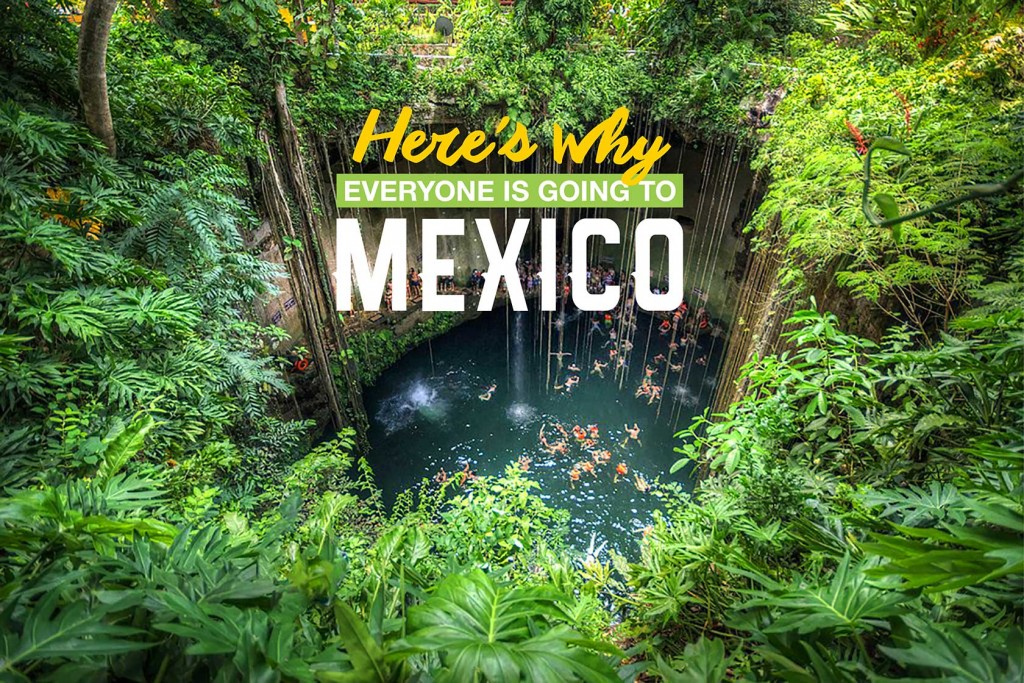
Brought to you by Contiki
This is Mexico: The sea. Cacti. Cervezas in the sunshine. Jungles. Cities. Street parties. Taco stands. Multicolored paper flags. Ruins. Margaritas. Waterfalls. Tradition. My memories of Mexico evoke many things, and all of them are colourful. It’s a country as a kaleidoscope; animated and complex, its many faces basking in the warmth of the Latin American sun. From the deserts in the north to the jungles in the south, the massive capital in the middle and the boundless beaches fringing both the east and the west coasts, the 31 states have been shaped by history and they each offer something you won’t find anywhere else.
Mexico’s influence is massively felt by its northern neighbour, the United States, and far beyond that. Even in our remote outpost of Australia, the Mexican food trend passed through capital cities, restaurants and blogs a few years ago like a tsunami. So maybe it’s the food that’s making everyone want to go there. Maybe it’s the nature. Or the warm people. Or, realistically, a combination of these things. Whatever it is, the country is probably shielding its eyes right now; so bright is the spotlight on Mexico as a travel destination.
But to say Mexico is ‘on trend’ is to do a disservice to the country. Don’t go there because everyone else is; go there because it’s one of the most incredible countries in the world. Mexico has a magnetic pull, and leaving feels like waking up from a vivid dream. Everyone I’ve met who has been there agrees: one visit will never be enough. It deserves your time and it sure as hell won’t let you down. When the days get shorter in Australia, Mexico is where you can make your summer stretch on and on. (And on.)
Here’s just some of the experiences that are entirely unique to this country.
Get Lost In The Colour And Movement Of Mexico City

First thing’s first: don’t call it “Mexico City” – only outsiders do that. Locals refer to it as “DF” (pronounced de-effe), short for Distrito Federal. It’s the largest Spanish-speaking city in the world; it seems to extend over the hills forever and with a population of 21 million people, there’s just two million less people in this single city than in all of Australia combined.
To get a starting taste of the action, hop off the plane, into a verified taxi and get out at the massive main city square Zocalo. The entire open city block is in constant movement. With a Mexican flag as large as a building waving overhead, you can sit like a rock in a stream and watch the fascinating city pass by.
DF is a city where you’ll struggle to ever lose sight of a taco stand. Go where the locals go, and don’t be shy with the condiments. The standard is tacos al pastor, a double tortilla with charred spit-grilled pork topped with a chunk of pineapple, diced onions and coriander. Old El Paso, it ain’t.
Head south to Coyoacán, where the party doesn’t spill onto the streets – it is the streets. Here, you’ll find Frida Kahlo’s Casa Azul (blue house), a colourful museum dedicated to the late artist’s life. Much of the house remains unchanged from when Kahlo lived there with her partner Diego Rivera, also an historical Mexican art heavyweight, in the 1950s.
Head north to Roma and the neighbouring La Condesa, where the houses and streets are colourful, the shops are full of emerging designer goods and you can actually find yourself a decent coffee. Between the two suburbs is Parque Mexico, an inner city Narnia with bike riders, roaming dogs and pink and purple bursts of bougainville; something went very, very right here.
EDM rules supreme in the underground dance clubs full of local talent, and parties start late. Try MONO or M N Roy. Events like Festival NRML see global underground heavyweights like Empress Of, Deerhunter and Low share the stage with a whole host of emerging local bands.
For a different kind of entertainment, DF is the best spot to get into some Lucha Libre; a form of professional wrestling involving colourful masks and high-flying maneuvers. Sure, it’s more of a performance for tourists than a tradition, but damn it’s a good time. The nearby Teotihuacan ruins are also an impressive reminder of the mighty and ancient Mesoamerican civilisations that were ahead of their times.
The Party of Playa And The Swimming Holes Of Tulum
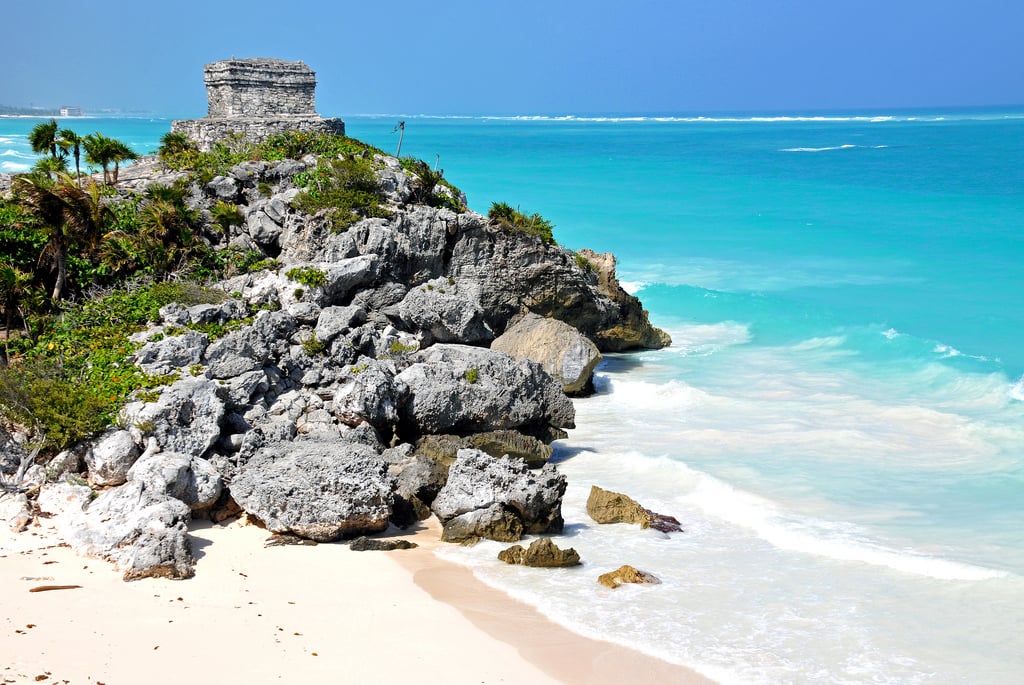
In the east of the country, skip Cancun and head south to the less resort-riddled and more chilled-out Playa Del Carmen. Don’t be fooled though; ‘Playa’ still knows how to party. The main streets are lined with shops selling mass-produced trinkets but hit the backstreets for cool local bars and tiny taco stands.
Keep an eye and ear out for cheap seafood specials like two-for-one lobster and enjoy even an evening of that 1 percent life. Once a year, Playa hosts an electronic dance festival called BPM. Unbeknownst to me, my trip collided with this. Trust me, even for someone not remotely into EDM, when you’re in the middle of thousands of people dancing and party fever literally devours the streets, it’s easy to get swept away. Wander ‘til dawn and take a refreshing dip in the ocean to be reborn.
An hour south is beachy paradise Tulum, which is a hangout for hip young Americans and, increasingly, Australians. Mayan ruins are surrounded by palm trees and jungle on one side and the clear jade sea on the other. The impressive coastline makes it one of the best beaches in Mexico, but you’ll have more fun going inland to swim in the cenotes; natural sinkholes full of filtered clear water surrounded by lush flora. You’ll find at least six of these swimming holes around Tulum; try Cenote Dos Ojos or Cenote Ik Kul, a two hour drive from the town in the Yucatan state.
The Charm Of San Cristóbal De Las Casas
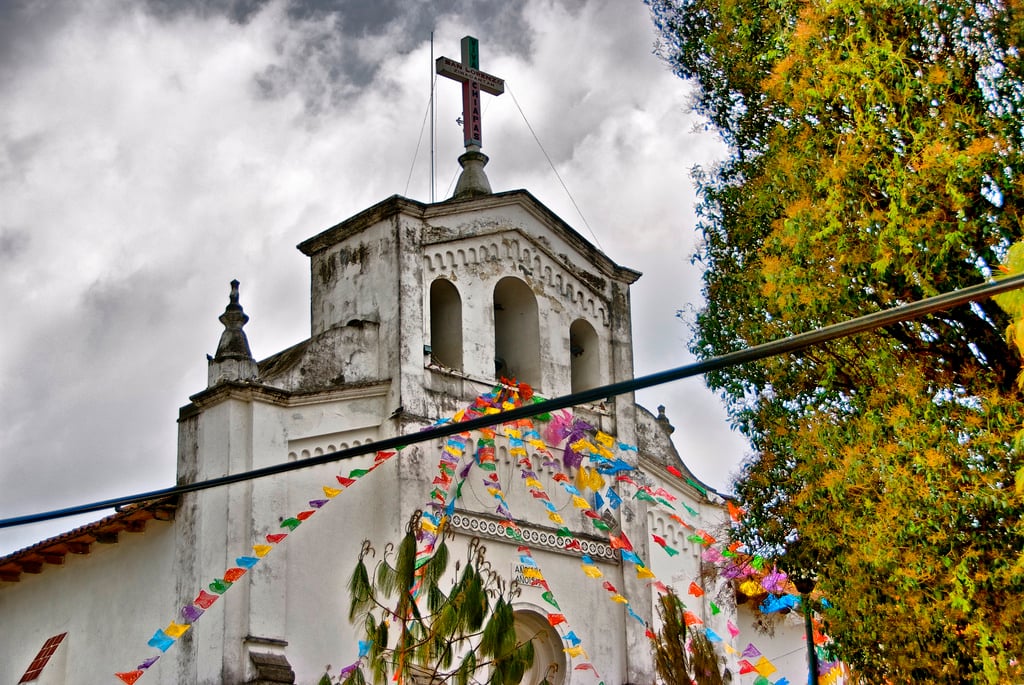
The small town of San Cristóbal is one of Mexico’s hidden gems. Found in the state of Chiapas, it’s set in a highland valley, with misty mountaintops and winding stone streets spilling haphazardly up hills between houses, each seemingly painted a minimum of two colours. It’s an arty and forward-thinking town; there’s a political past with the area’s revolutionary leftist Zapatista rebels and plenty of organisations working with the town’s indigenous population.
Hike the hill to the Guadalupe church which resembles a film set from Baz Lurhmann’s Romeo + Juliet, all vivid colours and gaudy decorations, and try a michelada (a Mexican Bloody Mary made with beer, clam-infused tomato juice and chilli) at a local bar.
Hire a scooter for the day and head for the hills – there are dozens of nearby indigenous Tzotzil and Tzeltal villages where you can find authentic artisan markets and learn about regional traditions. Or join a tour and take a daytrip from the highlands down into the jungle to visit the best ruins in Mexico.
The lower you get, the steamier it becomes. Don’t wear jeans (like I did). The ruins of Palenque were abandoned, absorbed into the jungle and then extracted. They’re so embedded in nature that you can barely tell what grew first. Lush licks of green crowd in from all sides, and it’s a visual spectacle. The turquoise cascading network of waterfalls known as Agua Azul is nearby and is equally as stunning, despite the heavy tourist foot traffic. Don’t miss it.
Cabo, Where The Desert Meets The Sea
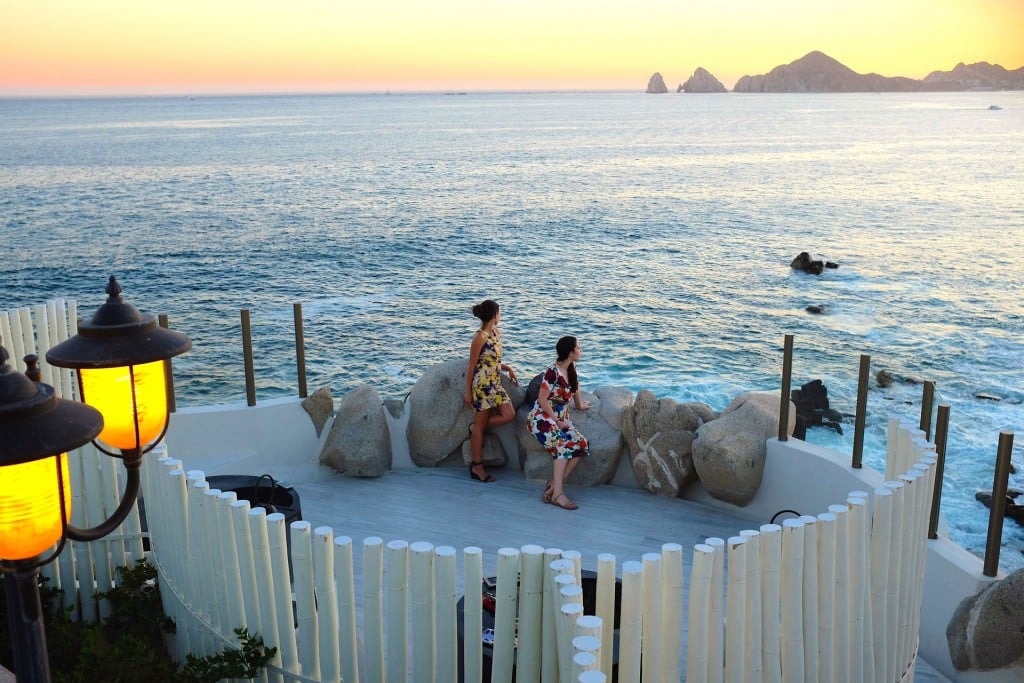
25-years-ago, Los Cabos, or “Cabo” as it’s known, was a sleepy fishing village with a single stoplight in town. Then, sun-hungry “estadounidense” (US Americans) discovered its near perfect weather (boasting 350 days of sunshine per year), bringing tourism in droves. But don’t let the “bicultural” aspect put you off; Mexican charm exists in spades.
The resort town on the southern tip of the Baja Peninsula is one of the few places in the world where the desert meets the sea. Los Cabos actually comprises of two distinct towns – the Spring Break haven of Cabo San Lucas and the tranquil and arty old town of San José Del Cabo. Between, there’s a 30 kilometre ‘corridor’ hugging the ocean full of fancy hotels and private resorts. This reputation for luxury and its proximity to LA (just a two hour flight) makes Cabo a playground for celebrities. On my visit, I say “hello” to David Arquette in the lobby of the hotel we are both staying at, The Cape. He appears to have had a big night.
Fresh seafood rules here, and it’s where you want to try Baja fish tacos. Fried in a light batter, the crispy fish pieces are enveloped by tiny warm tortillas and served with diced cabbage, coriander and salsa. Set aside some time to kayak out to the deserted “Lover’s Beach” and take in the famous sandstone arch formation that backdrops most Cabo photos. Despite being the desert, Baja California has the most amount of organic farms out of any Mexican state. Visit the hip green Flora Farms’ veggie crop/bar/restaurant or take a cooking class at Los Tamarindos organic farm.
The Petrified Waterfalls And Flavours Of Oaxaca
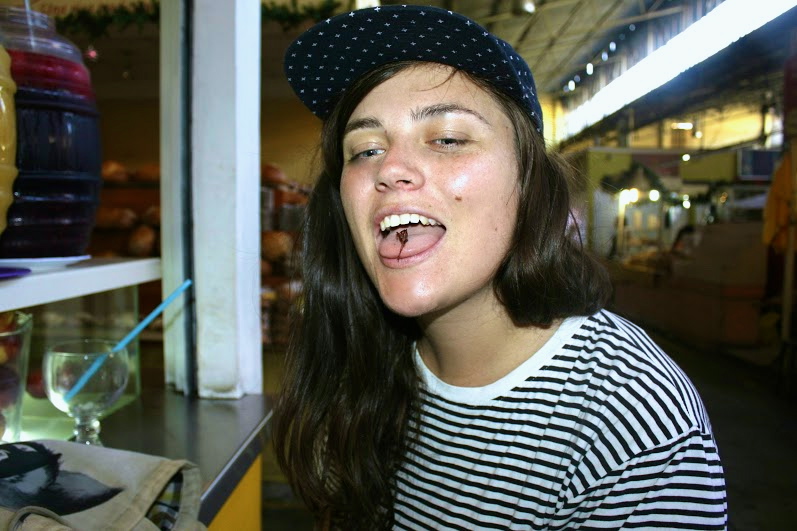
Our fearless Author, Taryn Stenvei Eating A Chapuline
Oaxaca is a few things: a state, an eponymous capital city (technically Oaxaca de Juárez) and impossible for outsiders to pronounce. The city is beautiful; colonial colours, a proud indigenous heritage, cobblestone streets, food stalls and cactus gardens, all backdropped by looming green mountains. People stand on street corners selling huge bouquets of balloons and traditional Mexican paper flags (papel picado) dot the sky like thrown confetti.
Oaxaca is the country’s culinary heart, and not even one mouthful of food there let me down. It’s the birthplace of mole (pronounced mo-lay), a sauce dish so complex that you can barely pin down a single flavour, let alone the 30 or so that make it up. Mole poblano is one of the most popular varieties; its base is chocolate ( not the sweet milk kind you’d find in a candy bar – think instead of dark and bitter cocoa), then they add in variations of spices, bananas, tomatoes, chillies and cloves. I’m in absolute awe of this dish; I can’t actually believe someone invented it. Get it in your mouth and embrace the weirdness. Casa Oaxaca el Restaurante is a nice place to try it, where you can eat with views of the mountains on the nice rooftop.
Try the Chapulines, edible grasshoppers that taste like very sour, salty and spicy version of popcorn. You can also eat plenty of unusual candies like gummy watermelon with a tamarind flavoured dipping sauce, or mango lollies dusted in a hot chilli sauce called chamote. Even nature’s candy, fruit, is served with a local twist. I ate an underripe diced mango on a stick that was covered in lime juice, salt and crushed chillis, and it was excellent.
In the Oaxacan backstreets, you’ll come across small mezcal bars, some with just a few stools, exclusively serving this Mexican spirit. Yes, it’s the one with the worm in it, and yes, it requires a slight sense of adventure. For starters, the smoky liquid it’s sipped, not shot, and each mouthful is followed by a suck of an orange slice that’s covered in sal de gusano (salt ground up with dried caterpillars). You can’t leave Mexico without saying you’ve tried it.
Up in the mountains, just an hour and ten minutes by car or tour bus from the city, there’s natural infinity pools perched on a cliffside overlooking a static frozen sulphur waterfall. There’s nothing else like Hierve el Agua on the planet, I’m pretty sure. My diary entry from that day sums it up best: “it’s sincerely the best shit.”
Low Key Beach Time At Puerto Escondido
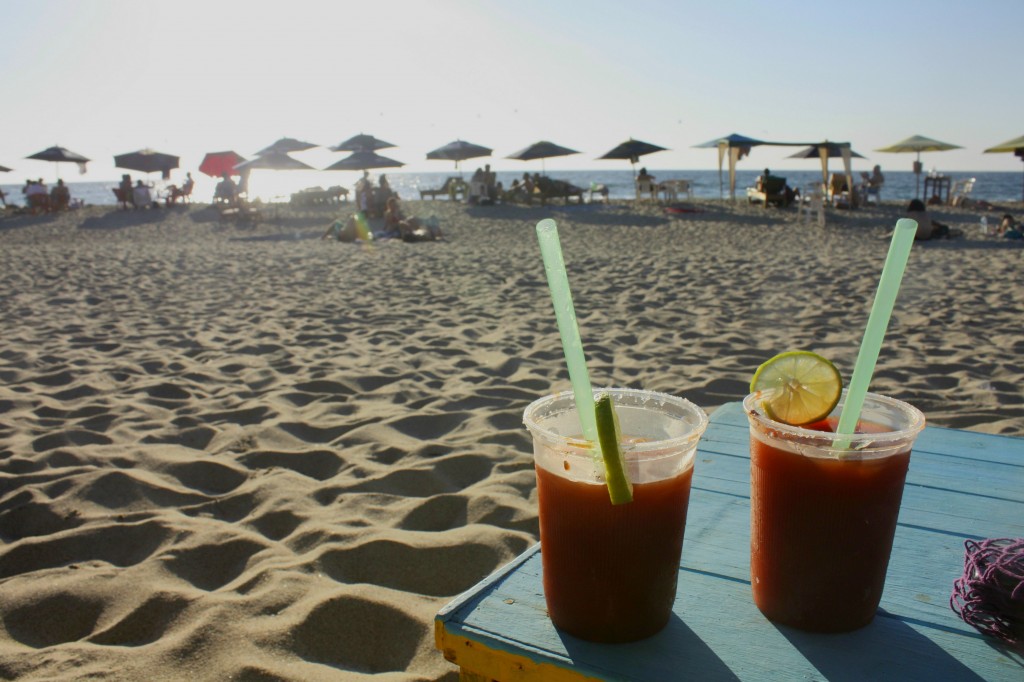
An overnight bus ride from Oaxaca will take you to Mexico’s west coast. Puerto Escondido is a hippie hangout – a “travellers” (not tourist) town – where bare feet seem to be the rule. You can hire a shaded beach chair for the price of a few cocktails which are freshly-prepared and delivered to you. Around the bay, there are a few beach clubs, filled mainly with locals, and taco stands selling the area’s special shrimp tacos, brought in fresh from the sea that morning.
On the beach, people have a funny habit of applauding the sunset as it dips into the ocean. But then again, why wouldn’t they? Mexico brings the goods every time. It deserves our praise; our thanks.
A few tips: In most places, people know very little English so learn even some basic Spanish. Please (por favor), thanks (gracias) and I don’t speak Spanish (no hablo español) is a good place to start. Few countries have done more to turn around their own image than Mexico, which spent decades being viewed as unsafe due to drug trade and guerilla warfare. Today, Mexico is a much safer place – you’ll notice a heavy police force on the streets in the capital, for example – but street crime is still an issue so be alert. Also, your stomach might struggle to adjust to a diet heavy in chili and corn, and you shouldn’t drink the tap water. Take the good with the bad, don’t let a bit of sickness ruin your trip and remember: you’re in Mexico. Make the most of it.
(Photos by Taryn Stenvei unless otherwise specified)

Brought to you by Contiki
